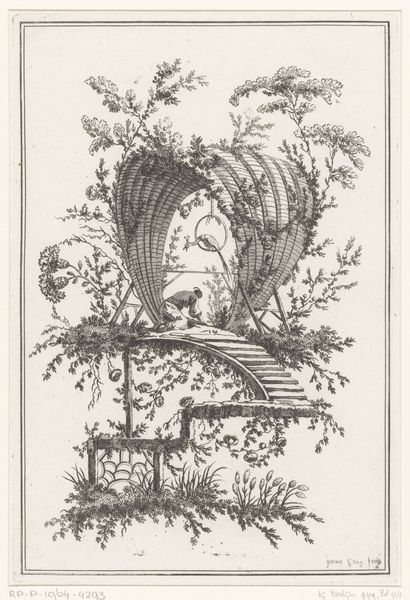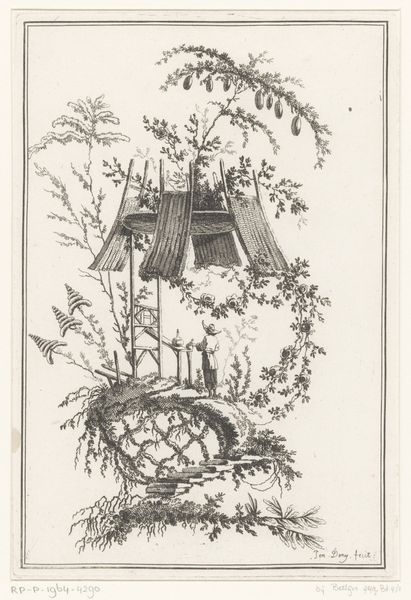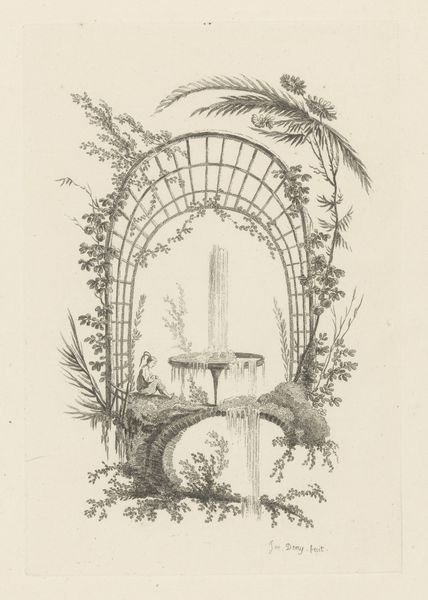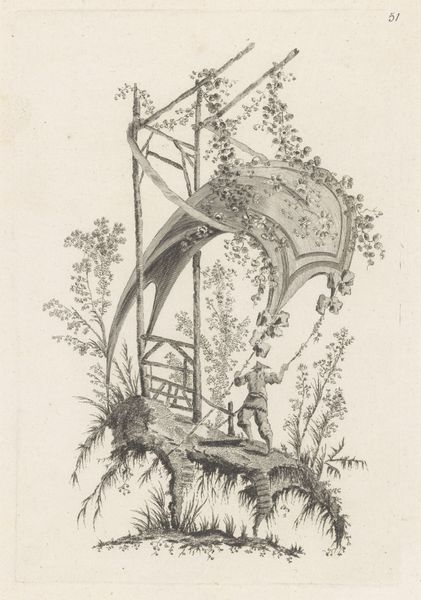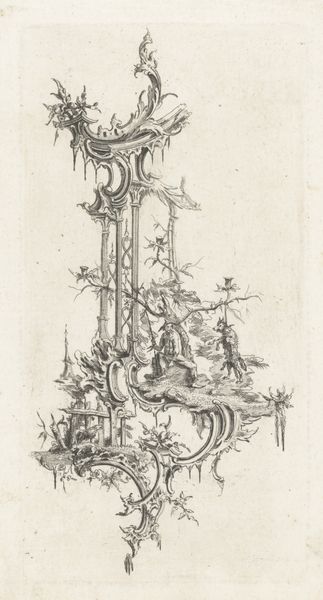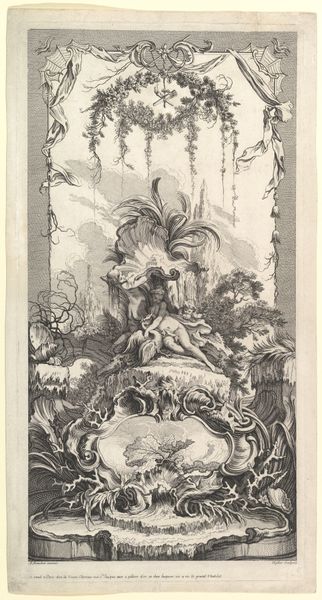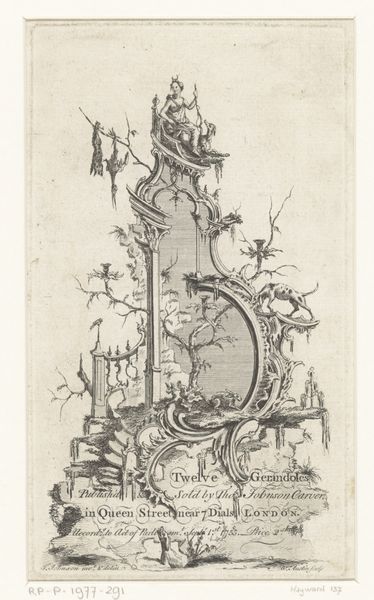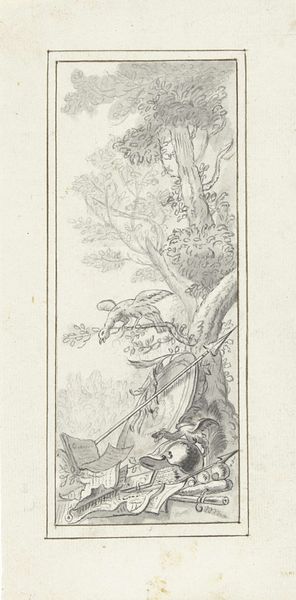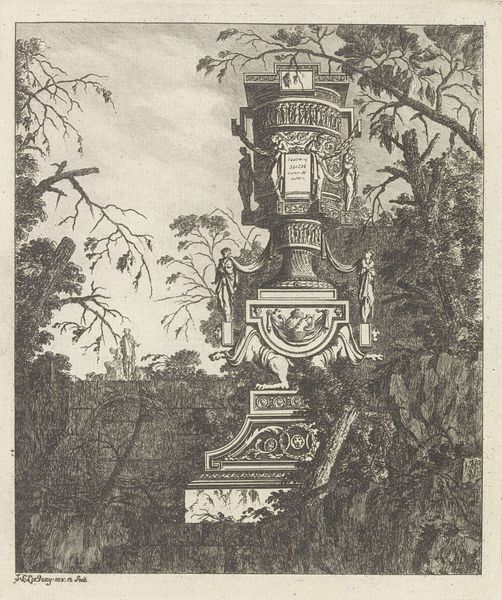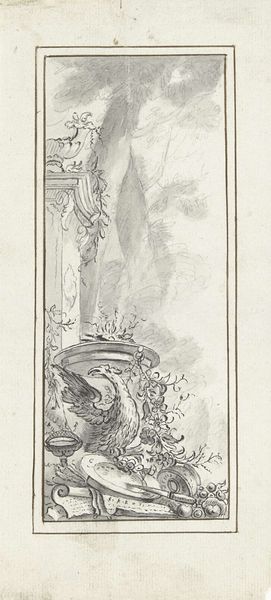
Dimensions: height 242 mm, width 164 mm
Copyright: Rijks Museum: Open Domain
Editor: So, this is "Man op schommel," made between 1772 and 1779, currently at the Rijksmuseum. It’s an etching – a delicate, detailed landscape with a figure on a swing, almost like something out of a dream. What jumps out at you when you look at this? Curator: It’s a fascinating piece for sure. The Rococo period was heavily influenced by exoticism, particularly "chinoiserie." Look at how the artist uses "Chinese" motifs—the stylized landscape, the figure’s clothing, the architectural elements—but distorts and reimagines them. What’s the impact of that remixing, that re-presentation? Editor: I see what you mean; it’s like a fantasy of another culture, rather than a true representation. Curator: Exactly. It speaks to the power dynamics inherent in representation. Europe, during this time, was actively colonizing and exploiting other nations. Do you think there is a connection? Editor: Hmm, that's an interesting perspective, because this whimsical scene suddenly feels a little less innocent, or at least not politically neutral. Curator: Right. Who gets to imagine, who gets to be represented, and under what conditions? This image reflects a specific gaze. How does that affect your understanding of the artwork? Editor: I guess I am not just seeing a pretty landscape; I am also seeing the social and historical context that enabled it. Thanks! Curator: And understanding that relationship gives you a more complex lens to engage with it. Always keep interrogating art. There's always a narrative—or multiple narratives—embedded within the surface.
Comments
No comments
Be the first to comment and join the conversation on the ultimate creative platform.
